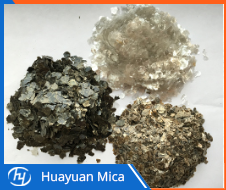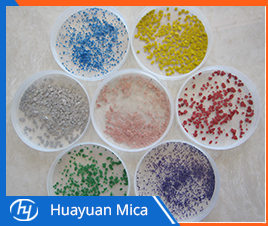Large crystals or books of mica--ranging from less than 2 cm (0.8 in) up to 2 m (6.6 ft) in length--are generally found in granitic pegmatites, which are light-colored, coarsely crystalline, igneous rocks. Variation of size within an individual deposit is not uncommon. Deposits of mineral materials containing some form of mica exist throughout the world. The largest resources of Muscovite Mica are in Brazil, Western Africa, and the Madras and Bihar areas of India. The Malagasy Republic is the major world source of phlogopite mica. Mica was first mined in the United States in New Hampshire. After about 1870 production of mica began on a large scale in North Carolina, which now produces more dry and Wet Ground Mica than does any other state, and the United States is the dominant world source of muscovite scrap and Mica Flakes. Small Dry Ground Mica Powder are used as a thin coating on rubber surfaces to overcome tackiness and sticking. In exterior house paints dry ground mica adds body, reduces running and sagging, and improves weatherability. The addition of mica to all types of sealers for porous surfaces (such as wallboard, masonry, and concrete blocks) greatly reduces penetration and improves holdout. The inclusion of mica in road and highway paints improves wearability, gives good adhesion, and reduces flaking and cracking. Micas are also used in caulking compounds,lubricants,greases,welding rodcoatings, and dry-powder fire extinguishers. Wet ground mica is produced by grinding mica flakes in water until they are reduced to fine scales. Wet Ground Mica costs more than twice as much as dry ground mica and is used predominantly in paint and rubber, as well as in plastics and lubricants. Wet ground mica is also used to coat wallpaper, because it imparts an attractive silky or pearly luster.

